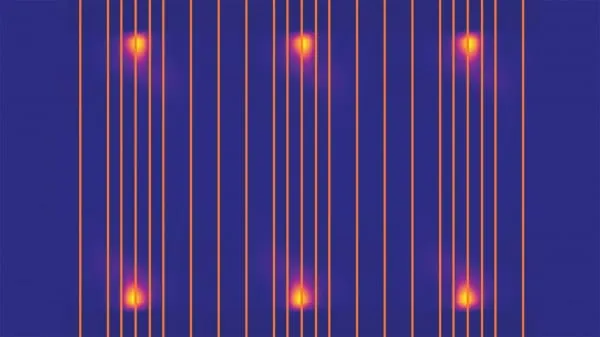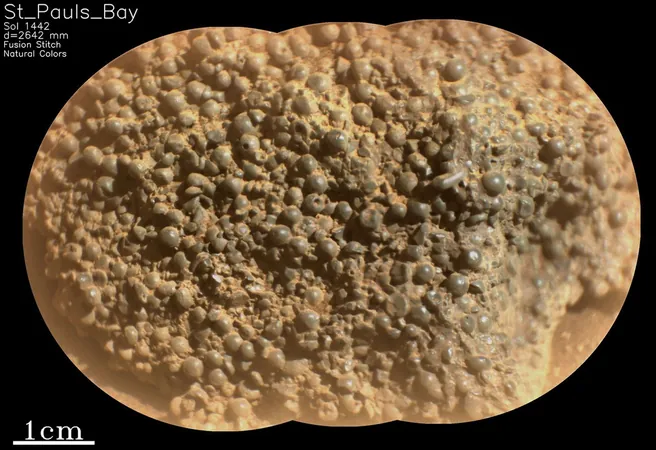
Six Gas Valves: The Game-Changer for Rapid Cooling in Fusion Energy Systems!
2025-03-25
Author: Mei
As fusion technology advances, the quest for a reliable way to cool plasma—a substance hotter than the sun—has become paramount. Researchers at Commonwealth Fusion Systems (CFS) have made significant strides, unveiling that precisely six gas valves are optimal for the rapid dispersal of cooling gas within their experimental fusion reactor, known as SPARC. This breakthrough could pave the way for a more stable and functional fusion reactor, driving us closer to the holy grail of renewable energy.
SPARC aims to harness the power of fusion, but when plasma instabilities occur, rapid intervention is essential to avert device damage. The researchers recognized that a massive injection of cooling gas could be the answer. However, they faced the challenge of determining the ideal number of gas valves. Too few may lead to overheating in certain sections, while too many could waste valuable space.
To find the right setup, the team utilized an advanced computer code named M3D-C1, developed by scientists at the Princeton Plasma Physics Laboratory (PPPL). Their simulations revealed that positioning six gas valves—three on the top and three on the bottom—ensured optimal cooling and protection for SPARC against plasma disruptions.
This innovative research, published in the journal Nuclear Fusion, involved collaboration between PPPL, the Massachusetts Institute of Technology (MIT), General Atomics, and Commonwealth Fusion Systems. It was partially funded by the Innovation Network for Fusion Energy (INFUSE), aimed at fostering partnerships between national labs and private sector companies to accelerate fusion development.
Andreas Kleiner, a lead author of the study, emphasized that their work not only refines the cooling mechanism but also confirms the capabilities of M3D-C1 in simulating rapid responses via more realistic gas jets. The insights from this study are already influencing SPARC's design, incorporating six strategically placed gas valves that maximize efficiency.
SPARC's design is a significant leap forward in fusion research. The reactor will utilize strong magnetic fields to confine plasma in a doughnut-like shape, but the effective management of ultrahot particle jets is crucial to protecting the reactor's walls. "Without proper mitigation, the extreme heat emitted could melt the reactor's inner walls," noted Ryan Sweeney, a co-author of the study.
The simulations marked a remarkable milestone in fusion research, considering configurations with various valve placements. Each simulation was computationally intensive, running for several weeks on some of the world’s most powerful supercomputers.
Nate Ferraro, deputy head of theory at PPPL, highlighted the unprecedented nature of these simulations, coining them "the most comprehensive disruption simulations conducted to date." The M3D-C1 code has evolved significantly, incorporating sophisticated techniques like non-equidistant meshing, allowing for precise modeling of the gas jets' interactions with plasma instability.
The collaboration between federal laboratories and private companies is indicative of a new era in fusion research. As public-private partnerships forge ahead, they not only enhance the design of experimental reactors like SPARC but also inform future fusion projects, including Commonwealth Fusion Systems' planned ARC power plant in Virginia.
So, what’s next? As SPARC nears completion, the fusion community remains optimistic that, with these technological advancements and insights, the dream of harnessing fusion energy for commercial electricity generation is within our grasp. Stay tuned as we keep you updated on this awe-inspiring journey toward a sustainable energy future!


 Brasil (PT)
Brasil (PT)
 Canada (EN)
Canada (EN)
 Chile (ES)
Chile (ES)
 Česko (CS)
Česko (CS)
 대한민국 (KO)
대한민국 (KO)
 España (ES)
España (ES)
 France (FR)
France (FR)
 Hong Kong (EN)
Hong Kong (EN)
 Italia (IT)
Italia (IT)
 日本 (JA)
日本 (JA)
 Magyarország (HU)
Magyarország (HU)
 Norge (NO)
Norge (NO)
 Polska (PL)
Polska (PL)
 Schweiz (DE)
Schweiz (DE)
 Singapore (EN)
Singapore (EN)
 Sverige (SV)
Sverige (SV)
 Suomi (FI)
Suomi (FI)
 Türkiye (TR)
Türkiye (TR)
 الإمارات العربية المتحدة (AR)
الإمارات العربية المتحدة (AR)